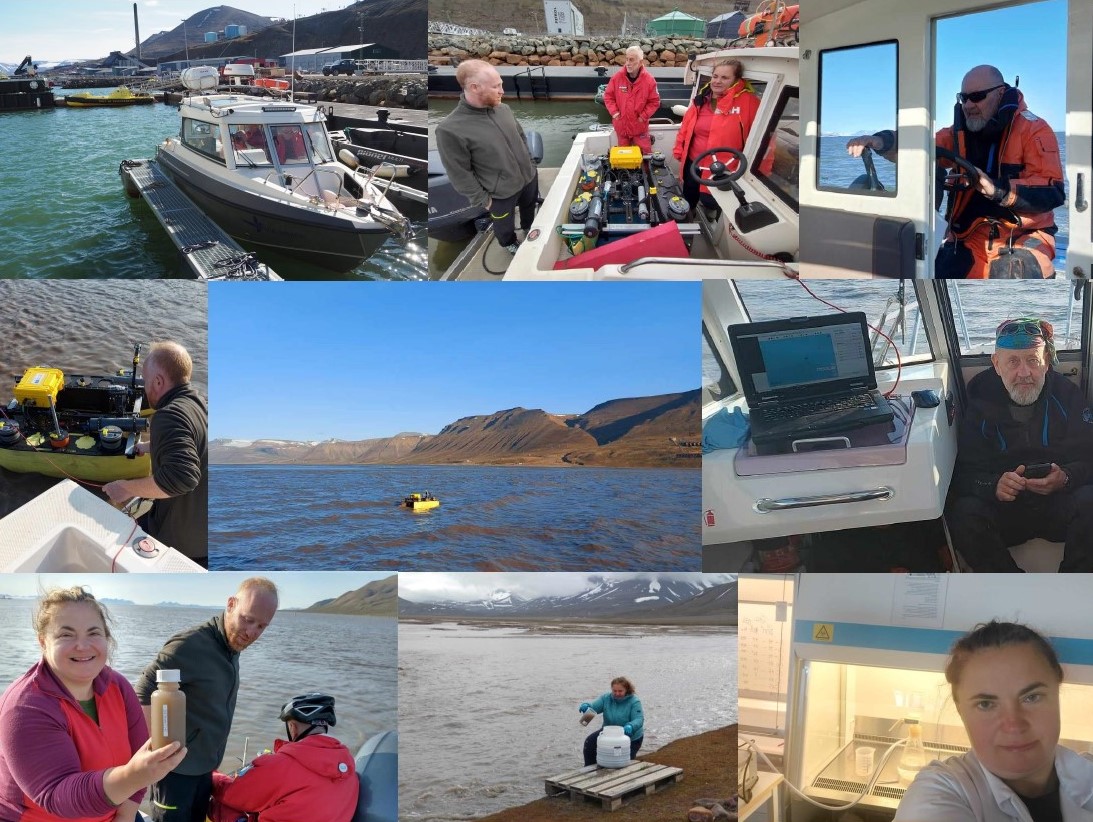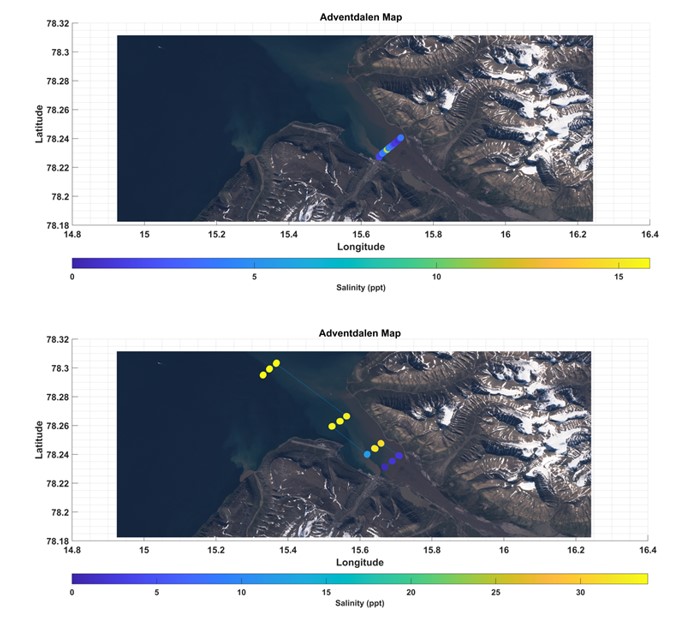by Agata Zaborska, Institute of Oceanology, Polish Academy of Sciences
The ARIVE project (RiS ID 11678) is a collaboration between IO PAS (Poland) and CNR INM (Italy). We planned the project with the use of UNIS infrastructure (boat and laboratory). The project aims to determine fluxes of selected trace metals and radionuclides discharged into the Adventfjorden (Spitsbergen) with river runoff. Longyearelva, Adventelva and her tributaries (Endalselva, Todalselva, Bolterelva) have been selected as a study area. Within the project, the concentrations of trace metals (Hg, As, Pb, Cd, Cu, and Zn) and artificial radionuclides (137Cs, 90Sr, 239+240Pu, 238Pu) in riverine water, seawater, and suspended particulate matter will be determined. Moreover the fluxes of studied pollutants will be calculated based on available data and models and asses marine ecosystem risk based on measured levels of trace metals and radionuclides.

The Project was conducted with a two year delay. The first delay was due to COVID, the project was postponed to 2022. In 2022, we had sent all the equipment and we were ready to conduct the fieldwork but the SAS airlines strike made it impossible for us to arrive to Longyearbyen. We had to cancel all our fieldwork plans and sent back the equipment. Finally in July 2023 we arrived to Longyearbyen to perform a 2 weeks fieldwork. Due to staff problems at UNIS we were not able to use the UNIS boat for sampling as planned. Happily we received help from IGF PAS and we used their boat. We have collected riverine and seawater three times every 3 days at 20 stations in Adventfjorden. Stations formed one transect along the river outflow and second transect from the rover outflow to the centre of Isfjorden. We also collected the riverine water from streams in Adventdalen. For the marine sampling we used remotely operated vehicle that entered the Adventelva river branches at the low tide when seawater did not enter the river outflows. The ROV entered the river branch until sampling depth of 0.5m. Prior sampling salinity, temperature, pH, Eh and oxygen content have been measured. The samples of 5L were collected using Niskin bottle. Immediately after collection samples intended for dissolved heavy metals and DOC analyses were filtered to vials through syringe filters. Every sample was then conserved in suprapure nitric acid and suprapure chloric acid and cooled. The remaining water was transported to UNIS laboratory and filtered separately through specific filters for Hg, As and other metals analyses as well as for POC content and radionuclide activity concentration. The filters were frozen and transported to the laboratory by a ship.
Laboratory measurements have been started in September 2023 at IO PAS laboratory. When all measurements will be finished the database containing all results will be prepared and shared. The results will be presented to the SIOS community as well as broader scientific audience.
The project team is very grateful to SIOS for their funding and assistance in making the fieldwork successful in these difficult times.




























